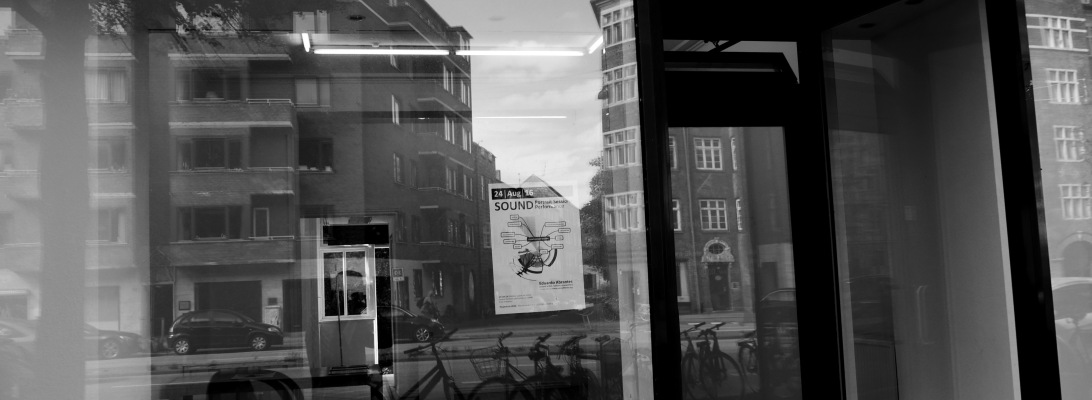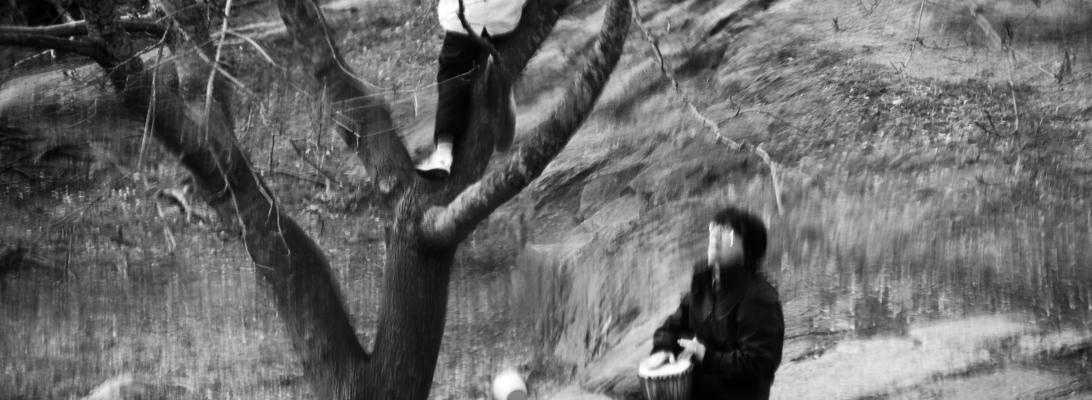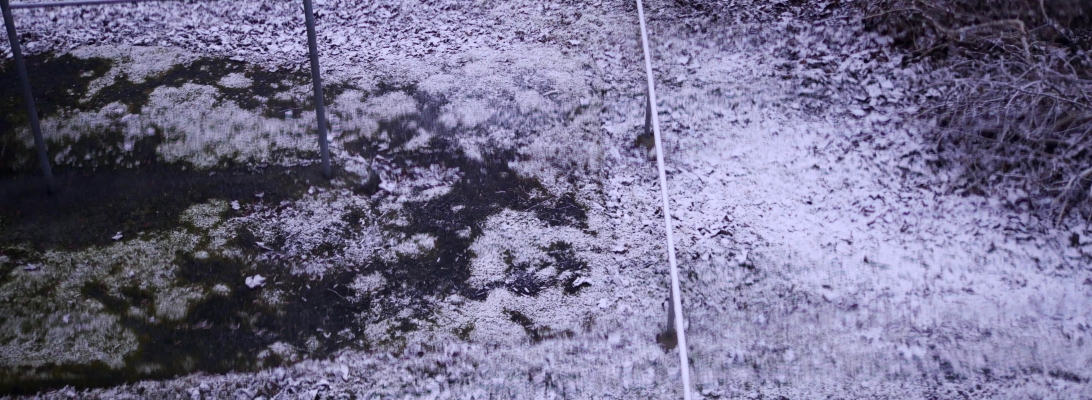1. heaven : haven : havn – introduction as afterthought
In Læsø, a small island of less than 2000 inhabitants off the northeast coast of the Jutland Peninsula, in Denmark, I was told that some stones have their own names. As an afterthought, that detail sparked the play between body, perspective and landscape in heaven : haven : havn.
heaven : haven : havn (previously known by the working title “salt of the earth / salt of the sea”) was the result from an invitation to do a collaborative artistic residency aiming towards a site specific intervention. The invitation came initially from Jon Eirik Lundberg, director of the Læsø Kunsthal (established in 2012), via Eja Rhea Due and Camilla Calundann, respectively director/performer and scenographer/visual artist of the Copenhagen-based collective Teater Bæst.
After a previous shorter trip in February, for two weeks in May 2016, me, Eja, and Camilla, stayed in Læsø and researched the different strands of inspiration that the island afforded, while exploring how best to bring our individual practices and strategies to combine into a coherent artistic intervention.
Our collective process developed across three intermingling levels. These three levels followed three main elements of site specificity as immersive practice: the local landscape, the life rhythms and the social fabric of the inhabitants, the awareness of the implications of our own presence as short-term nomadic visitors with an aesthetic agenda.
2. Site specificity as an exercise in self-awareness, and heaven : haven : havn as an outcome
A short note about these three levels of site specificity.
Læsø’s landscape is dominated by flatness and by the slow shifting texture of the ground below the horizon. From the thick forest areas, to the hybrid farm lands, from the pelt like smoothness of the low coastal vegetation, to the sandy beaches sprinkled with white sun-bleached shells and bird bone fragments, to the low pulse of the tide changing green to blue according to the depth – it is a landscape to be experienced underfoot and above eye level, an horizontal reach with a panoramic sensibility.
With so much space and such a sparse population, people tend either to be very close together, or far apart. The life rhythms of the fishing folk, for example those we shortly met at the “Universitet”, a fishermen’s shack converted into a temporary hangout for storytelling and drinking, are marked by a deliberate slowness at land. Carlsens Hotel, at Vesterø, close to where the ferry docks, is another hub of slow burning conversation and raspy voices surrounded by a halo of boredom. Freedom and boredom, the prize and the sacrifice, seem to deeply mark Læsø’s life rhythms.
Also the scope of individuals and their dreams, like those of “Amerikaner Pete”, a well established farmer dreaming of building a Læsø mythology theme park in his land, an island within the island. Or the calm assurance and reticent perspective of the single policeman of the island, navigating a discreet mental map of neighbours and their natural frictions, or of outsiders and their occasionally dubious intentions.
One of the most inspiring elements: the ferry between Fredrikshavn and Læsø, part geographical extension of the island’s territory, part social network – with its shuttle pulse mimicking almost something like the inhaling/exhaling flow of life into and off the island.
The third level, us, our own engagement with the island by walking, running, gathering materials, recording sounds and taking photos, building up our own mind-maps, our own temporary territories. Trying to participate as active listeners in the storytelling rituals of the island’s inhabitants. Also, struggling with the specific languages of our practices, sometimes their incommunicability, sometimes their apparent consonance, even more surprising. The friction between our own expectations and ambitions, between the kinds of access we projected into our stay in the island, and the access we actually had to built, or sometimes to find, by sheer accident.
Out of this complex dynamics of artistic research, heaven : haven : havn manifested – as a temporary audio-visual installation at the Læsø Kunsthal, in a room where a model/texture map of the island’s materials was also crafted.
As a video art piece, heaven : haven : havn connected different levels of reality. The subtle exploration of the landscape by the presence of the body; the reference to the mythologically charged identity of the island, where ancient stones appear as worthy of having a name; and the focus on a manipulated horizon inspired by the radical flatness of the island, where the underfoot is brought closer to eye level.
The soundscape of heaven : haven : havn was composed mostly of binaural recordings taken during the ferry trip between Fredrikshavn and Læsø. In a exercise in acoustic embodiment, I walked deliberately on the empty upper deck, drawn by the lull of the sea, its contrast with the intense volume of the pitched frequencies of the exhaust grids, and together with the low rumbling of the ferry’s motors a few levels below. Also part of the soundscape was a discreet electronic improvised composition, produced exactly in the context of the long hours of freedom and boredom provided by Læsø’s sparse and meditative environment. (Some of the other sound compositions done while at the island were brought together in a piece called Spiritual Soliciting, which can be found here as 7# in the “Some Days Series” or listened to individually here.)
3. Læsø : view into a process

Harbor dwellers at Vesterø Havn, photo credit: Eduardo Abrantes

Læsø Kunsthal, photo credit: Eduardo Abrantes

A home for a time, Vesterø, photo credit: Eduardo Abrantes

Exploring the west coast, photo credit: Eduardo Abrantes

Havets Dag at Vesterø, photo credit: Eduardo Abrantes

Vesterø, photo credit: Eduardo Abrantes

Exploring the landscape through the body, photo credit: Eduardo Abrantes

Landscape local textures, photo credit: Eduardo Abrantes

Looking back at Fredrikshavn from the ferry deck, photo credit: Eduardo Abrantes

Exploring the west coast, photo credit: Eduardo Abrantes

From left to right: Eja, Jon, Camilla, and Eduardo, photo credit: Eduardo Abrantes

Inside Carlsens Hotel, Vesterø, photo credit: Eduardo Abrantes

Læsø Kunsthal, photo credit: Eduardo Abrantes

Home textures, photo credit: Eduardo Abrantes

Fredrikshavn-Læsø ferry, photo credit: Eduardo Abrantes

Læsø Kunsthal, photo credit: Eduardo Abrantes

Flatness and highlights at Bouet Bugt, photo credit: Eduardo Abrantes

Home textures, photo credit: Eduardo Abrantes

Exploring the landscape through the body, photo credit: Eduardo Abrantes

A home for a time, Vesterø, photo credit: Eduardo Abrantes

Havets Dag at Vesterø, photo credit: Eduardo Abrantes

Inside Carlsens Hotel, Vesterø, photo credit: Eduardo Abrantes

Fredrikshavn-Læsø ferry, photo credit: Eduardo Abrantes

Exploring the landscape through the body, photo credit: Eduardo Abrantes

Exploring the landscape through the body, photo credit: Eduardo Abrantes

Læsø Kunsthal, photo credit: Eduardo Abrantes

Traces of human presence along the west coast, photo credit: Eduardo Abrantes

Læsø Saltsyderi, photo credit: Eduardo Abrantes

Exploring the landscape through the body, photo credit: Eduardo Abrantes

Læsø Saltsyderi, photo credit: Eduardo Abrantes

Fredrikshavn-Læsø ferry, photo credit: Eduardo Abrantes

Exploring the landscape through the body, photo credit: Eduardo Abrantes

Landscape local textures, photo credit: Eduardo Abrantes

A home for a time, Vesterø, photo credit: Eduardo Abrantes

Dusk settling, photo credit: Eduardo Abrantes

Inside Carlsens Hotel, Vesterø, photo credit: Eduardo Abrantes

Private dry dock, photo credit: Eduardo Abrantes

Crossing into Hornfiskrøn, photo credit: Eduardo Abrantes
This project and artistic residency were made possible by a grant from the Nordic-Baltic Mobility Programme for Culture attributed by the Nordic Culture Point / Nordic Council of Ministers.
























































































